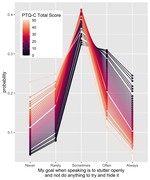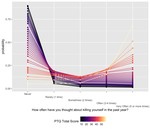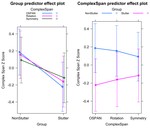Biography
I am a person who stutters, a speech-language pathologist, and an assistant professor at Duquesne University. My research interests include better understanding and predicting individual differences in the experience of stuttering (stammering), understanding how adverse impact related to the condition develops, and determining how moments of stuttering occur in speech. I am currently investigating the role cognitive-affective processes have on speech production and language formulation processes in stuttering and non-clinical populations. I also practice clinically and am actively involved in clinical education regarding stuttering assessment and treatment.
Interests
- Stuttering (Stammering)
- Neurophysiology of Speech & Language
- Psycholinguistics
- Survey Research
- Statistics
Education
-
PhD in Communication Science and Disorders, 2020
Michigan State University
-
M.S. Speech-Language Pathology, 2013
University of Pittsburgh
-
A.B. Classical Civilization, 2010
Wabash College



